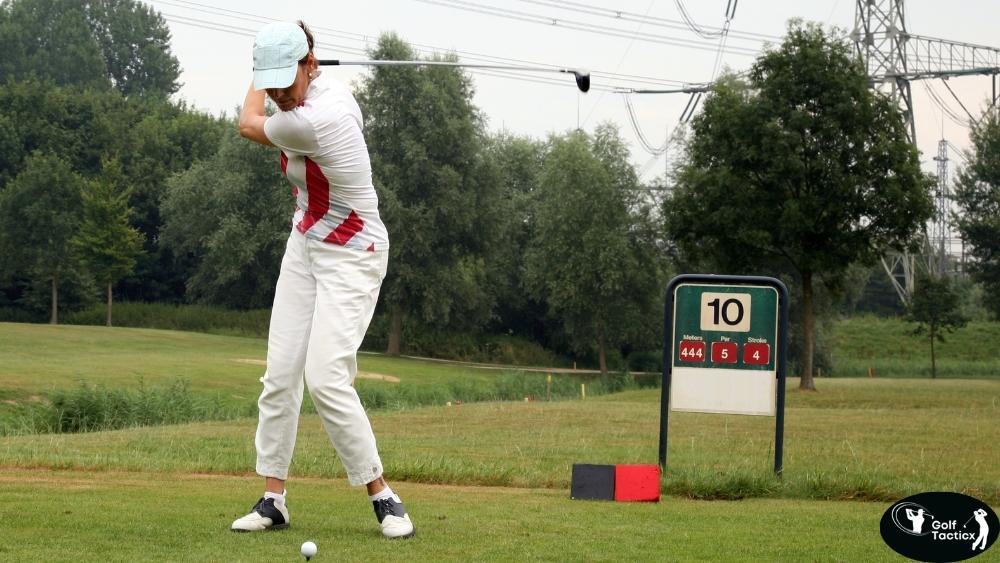In the previous post, we covered How to Play Better Golf Under Pressure? offering valuable tips to stay calm, focused, and confident during high-stakes rounds to improve overall performance.
A consistent pre-shot routine is essential for golfers aiming to enhance their performance and maintain focus throughout a round. By establishing a repeatable sequence before each shot, you can reduce anxiety, improve concentration, and execute shots more effectively. Here’s how you can develop a routine that works for you:
Understand the Importance of a Pre-Shot Routine
A well-structured pre-shot routine serves several purposes:
- Focus: It directs your attention to the task at hand, minimizing distractions.
- Consistency: Repeating the same steps before each shot builds muscle memory and confidence.
- Relaxation: It helps manage nerves and promotes a calm state of mind.
Develop Your Routine
While routines can vary among golfers, a typical pre-shot sequence includes:
- Assessment: Evaluate the lie, wind conditions, and any hazards.
- Club Selection: Choose the appropriate club based on the shot requirements.
- Visualization: Picture the desired shot shape and landing area.
- Practice Swings: Take one or two swings to feel the motion and rhythm.
- Address the Ball: Set up with proper alignment and posture.
- Final Focus: Concentrate on a specific spot on the ball or a point just in front of it.
- Execute: Swing with confidence and commitment.
Personalize Your Routine
Tailor your routine to suit your preferences and needs:
- Simplicity: Keep it straightforward to ensure consistency.
- Timing: Maintain a consistent pace; avoid rushing or overthinking.
- Mental Focus: Incorporate techniques like deep breathing or positive affirmations to stay calm.
Practice Your Routine
Repetition is key to ingraining your routine:
- On the Range: Practice your routine during range sessions to build muscle memory.
- During Rounds: Apply your routine consistently on the course, regardless of shot difficulty.
Evaluate and Adjust
Regularly assess the effectiveness of your routine:
- Reflect: After rounds, consider what worked well and what didn’t.
- Adjust: Make necessary tweaks to enhance comfort and effectiveness.
Practical Example
Imagine you’re facing a challenging approach shot:
- Assessment: Notice the wind is left to right, and there’s a bunker on the right side of the green.
- Club Selection: Opt for a 7-iron, considering the wind’s effect.
- Visualization: Envision a slight fade that starts left of the flag and lands softly on the green.
- Practice Swings: Take two smooth swings, focusing on the desired shot shape.
- Address the Ball: Align your body left of the target, aiming to start the ball left.
- Final Focus: Concentrate on a spot just in front of the ball where you want the club to make contact.
- Execute: Swing with confidence, trusting your preparation.
Tools to Enhance Your Routine
Incorporating certain tools can further improve your pre-shot routine:
Garmin Approach S62
A premium GPS watch offering detailed course maps, shot tracking, and hazard information.
Shot Scope V3
A GPS watch with automatic shot tracking, providing insights into your game and helping you plan shots to avoid hazards.
GolfBuddy Voice 2
A voice-enabled GPS device that delivers distances to hazards and greens, allowing for hands-free operation.
SkyCaddie SX500
A handheld GPS device with a large touchscreen, offering detailed course maps and hazard information.
Bushnell Phantom 3
A compact GPS device providing accurate distances to hazards and greens, with a magnetic mount for easy attachment.
By integrating these tools into your routine, you can enhance your shot planning and execution.
Conclusion
A consistent pre-shot routine is a powerful tool for golfers seeking to improve their game. By developing and practicing a routine that suits you, you can enhance focus, reduce anxiety, and execute shots with greater confidence.
Stay tuned for the next post, where we’ll discuss drills to improve accuracy.
















Leave a Reply